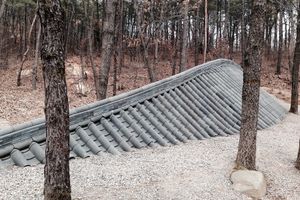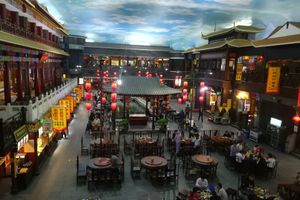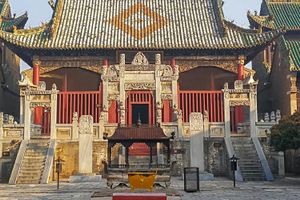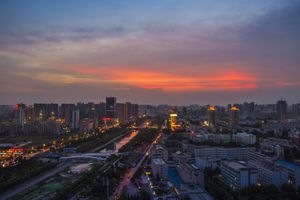Henan Province
Population: 94,023,567

Termed as the “breadbasket of China”, the Henan Province lies in the fertile Yellow River basin. Since very ancient times the region has been a lush agricultural land. It has a long and rich history and has the distinction of being the origin of four Chinese civilizations. With a stunning topography, countless attractions, ancient religious and historical sites, and a tourist-friendly environment, Henan Province is a sought-after tourist destination.
GEOGRAPHY:
Henan Province is as diverse in its landscape as it is in culture. It can be safely said that Henan has everything except for glaciers! The eastern Yellow River plains have a picturesque wall of mighty mountains on three of its sides. The Taihang Mountain range extends from Shanxi Province into Henan to form the eastern part of the Loess Plateau. The Xionger and Funiu ranges with their dense deciduous forests flank the western side.
And the Dabie Mountain range stretches along the southern border between Henan and Hubei. Separated from the rest of Henan by this range is the fertile Nanyang Basin. Mount Laoyachanao is the highest peak in the region at more than 2,400 meters above sea level.
The Yellow River that passes through central plains and the Huai River in the southern regions of the Province bring with them rich silt that would normally be conducive for agriculture. Despite its plentiful water, the Yellow River basin has been prone to sandstorms due to an alternating flood-famine syndrome.
With the development of dams and levees, the region has turned into a lush green expanse, with crops growing throughout the year. Today, the region is one of the largest producers of wheat, sorghum, rice, millet, barley, maize, sweet potato, soy, and green lentils in China.
The province of Henan has two distinct types of climatic conditions. The southern districts have a humid subtropical climate, with hot and rainy summers and pleasantly cool winters. The temperature remains steady between 27 and 28oC. Whereas, the northern districts are affected by the Siberian cold winds and have a temperate continental climate. Summers are warm with heavy rainfall but winters are cold with occasional frost. Temperatures range between 0oC and 28oC depending on the season.
CITYSCAPES:
Henan is the second most densely populated province in China. Majority of the people are located in large urban cities and metropolises like Zhengzhou (provincial capital), Xinxiang, Anyang, Nanyang, Zuchang, Yuzhou, Kaifeng, Pindingshan, and others.
The region has seen rapid urbanization and the establishment of special economic zones in the last decade. The various industries that have sprung up include Information Technology, raw material processing, cement, heavy machinery manufacturing, textiles, bio-pharmaceuticals, agro and food processing, petrol, chemicals, electronic equipment (especially pertaining to photography), and others.
Henan has rich deposits of minerals like molybdenum, coal, alkaline metals, aluminum, and tungsten. Consequently, mining, processing, and exports are also major occupations and contribute to the economy in a big way. Having a large number of tourist attractions in the region has encouraged the development of the tourism and hospitality sector, especially in the larger cities and towns.
HISTORY & CULTURE:
Henan Province has a very unique place in the history of China. Since the 21st century B.C., the region has been ruled by 20 dynasties and 200 kings. Their dynastic capital cities like Luoyang, Kaifeng, Anyang, and Zhengzhou are located in the Province. These account to four out of the eight ancient capitals in China.
Today, with an immense population of 93 million, the Henan Province has a very strong religious history. Majority of the people are Taoists or Zen Buddhists, with a very small percentage being either Catholics, Protestants, or Muslims.
TRAVEL & TOURISM:
Presently, there are five airports in the Henan Province located in the cities of Zhengzhou, Luoyang, Shangqiu, Nanyang, and Xinyang. The Zhengzhou Xinzheng International Airport is a large airport serving 82 domestic and International airlines and connecting to 50 big cities around the world. Henan forms the junction for many major railway lines going across China and has a good internal rail system as well. Also, the development of high-speed expressways provides the Province with an unmatched transportation system that serves the purpose of the locals as well as tourists.
The Henan Province has a distinct edge over other regions due to the presence of three UNESCO World Heritage Sites within its boundaries. They are the Baima Si Temple (White Horse Temple) established in the 1st century, the Longmen Grottoes which are 5th-century century Buddhist rock carvings, and the Yuntai Shan (mountain peak) Scenic Area.
The Dengfeng Shaolin Monastery is also one of the most popular tourist attractions of the Province. It is well-known as the origin of Kung-Fu and Tai Chi martial arts. The Shuce Cliff is also a very popular attraction in Henan. It is located on one of the steep cliff-faces of Mount Song which is considered to be a Taoist sacred mountain. The U-shaped Longtan Valley with its series of splashing waterfalls is one of the most serene and beautiful sights in the Province and a delight for photographers.
Henan cuisine, also known as Yu cuisine, is derived from the native cooking styles of the Henan Province in China. The ingredients that are commonly used are onions, pork, meat, poultry, rice, wheat noodles, rice noodles, etc. Some of the popular dishes are baked carp and noodles, egg cooked in an iron pan, stir-fried three crisps, Kaifeng steamed stuffed buns, Braised mutton and noodles, and Luoyang swallow dish.





